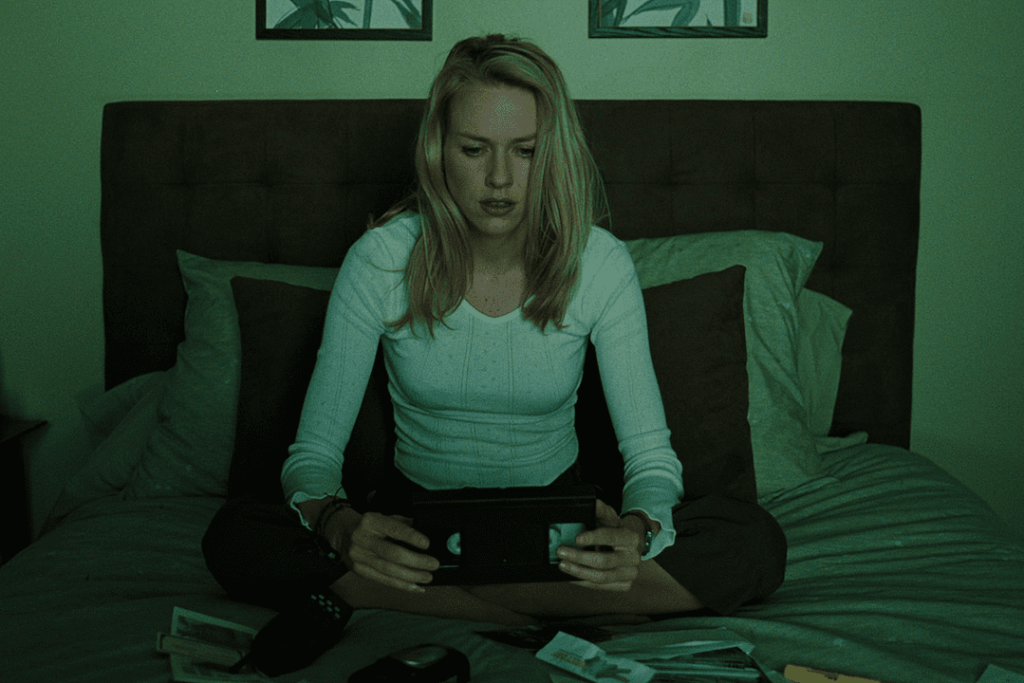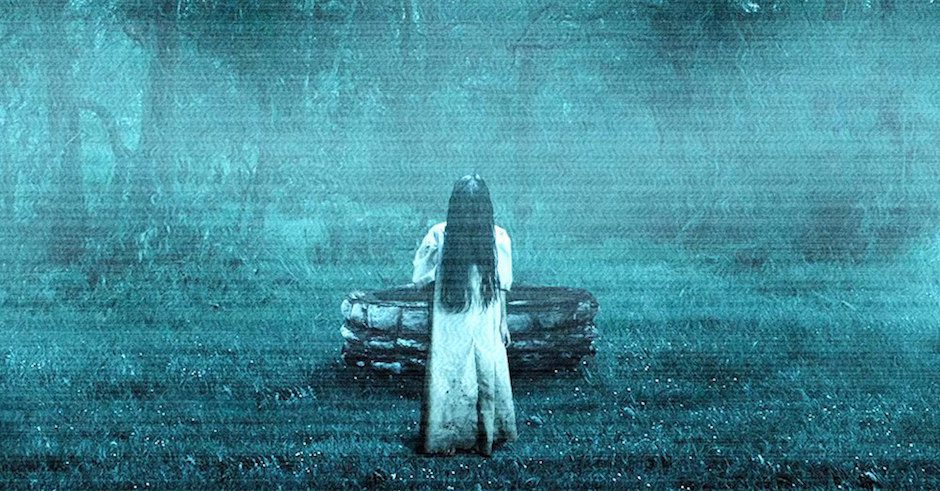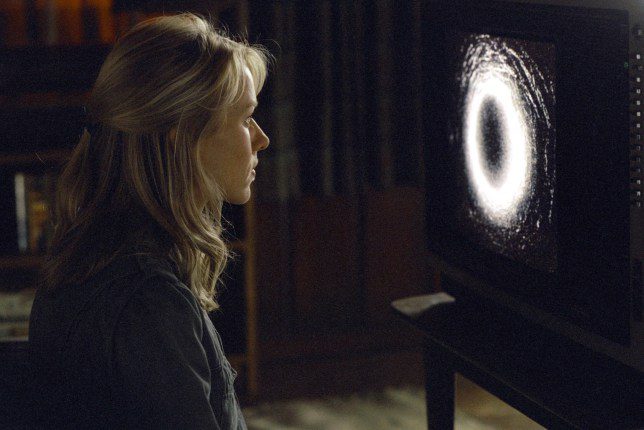“Seven days.”
The Ring has remarkable staying power. At 17 years old, and responsible for the regrettable glut of J-horror remakes (The Eye, The Grudge, Dark Water, and so on), it shouldn’t hold up this well. It’s proof that if you want something to endure, make it with the intention of something beyond profit. For a mainstream, big-budget horror film, The Ring is impressively complex, strange, and artful. The inevitable sequels are largely forgettable, but the original still earns a place in the modern horror canon.
The plot is so well-known by now that, if you’ve seen the movie, the two words I quoted above most likely brought you right back into it. That’s one of the great successes of Gore Verbinski’s film: its atmosphere. From the first scene, things feel somehow off, askew. Two girls are at a sleepover, and one asks the other, “Have you heard about this video tape that kills you if you watch it?” Inelegant, sure, but how else would you introduce a concept like this? One of the girls watches the tape, and describes it as watching somebody’s nightmare, which is kind of how the whole film feels. The cold open is pleasingly long, and draws out the tension to its breaking point. We get the sense that this is actually a teenage girl facing her imminent death. When we finally get a glimpse of her body, the features have been drawn out unnaturally long, her mouth contorted into a horrible rictus. It’s an indelible image, only on screen for seconds, but one that stays with you for a long time (I saw this in theaters in 2002, and think about that image fairly often).
The girl’s aunt, Rachel Keller (Naomi Watts), learns of the tape from a funeral guest, and sets out to investigate it. Watts is reliably terrific in just about anything (even Movie 43), and she shines here. Rachel is tough, determined, but also terrified. The meat of The Ring is Rachel’s investigation, which is what makes it so enthralling. There are no jump scares here or loud musical stings; Verbinski instead relies on an ever-increasing sense of dread, and the score by Hans Zimmer is chilling in its use of atonal instruments and swelling strings. The whole film has a blue patina, and at times, yes, looks like a nightmare.

The Ring is not without its use of tropes; however, it could be argued that the film helped popularize a lot of them. Creepy kid who draws spooky pictures? Check. Jittery movement from a ghost? Check. The reason The Ring succeeds where other films fail is because its director knows how to use these tropes to the film’s benefit. Verbinski is a director of uncommon range, having helmed everything from The Mexican to Pirates of the Caribbean to Rango (including the recent underappreciated The Cure for Wellness). His is such a steady hand that if one were to only watch The Ring, one could be forgiven for thinking that Verbinski is primarily a horror director.
To be fair, not everything about the film holds up today. Martin Henderson is pretty bland as Noah, Rachel’s ex. Henderson acts around his stubble, and why he wears flip-flops in Seattle is anyone’s guess. It’s hard to tell if David Dorfman is good or not as Aiden, Rachel’s son; the creepy kid character has been used to death by now, so maybe it’s just fatigue. But his precociousness is a bit grating at times; I think we can put a moratorium on kids who call their mothers by their first name.
That’s not enough to hamstring the film, though, because the mystery at its core is so engrossing. The Ring predates smart phones, and as a result, Rachel and Noah have to visit various libraries and record depositories. It gives the proceedings a kind of retro, tactile charm. It makes it all the more chilling when Rachel finds her way to the Morgan house, and starts seeing pieces of furniture that she recognizes from the tape. (It’s also here that we meet Brian Cox, brilliant in his few scenes.)

What can’t be overlooked is the performance of Daveigh Chase as Samara Morgan. After the film’s release, Samara rightfully became one of horror’s most iconic villains, but beyond being frightening, with her dead eyes and jerky movements, Chase imbues Samara with a sense of humanity. She wasn’t always this twisted wretch, and as we learn more of her backstory, the more we’re reminded of it. The Ring is an uncommonly empathetic horror movie, at its core.
Is The Ring still scary? Maybe not in 2019, but the window has shifted so drastically from 2002, that it’s kind of inevitable. But it succeeds in remaining eerie, in giving the viewer the sense that something is off in this world. One wishes the film had been left alone, because it certainly stands alone.
10/1: Hellraiser / The Invitation
10/2: Splice / Banshee Chapter
10/3: Jennifer’s Body / Raw
10/4: Dominion: Prequel to The Exorcist / Book of Shadows: Blair Witch 2
10/5: Kill List / A Field in England
10/6: Halloween II / Halloween III: Season of the Witch
10/7: A Nightmare on Elm Street 2: Freddy’s Revenge / A Nightmare on Elm Street 3: Dream Warriors
10/8: Ginger Snaps / Creep
10/9: Cube / Creep 2
10/10: The Texas Chainsaw Massacre (2003) / The Ritual
10/11: Hell House LLC / The Taking of Deborah Logan
10/12: Re-Animator / From Beyond
10/13: Beetlejuice / Sleepy Hollow
10/14: Idle Hands / The Lords of Salem
10/15: The Ring / Noroi: The Curse
10/16: I Know What You Did Last Summer / The Monster
10/17: Night of the Living Dead / Train to Busan
10/18: The Devil’s Backbone / Southbound
10/19: Event Horizon / Dreamcatcher
10/20: The Cabinet of Dr. Caligari / The Bad Seed
10/21: Eyes Without a Face / Goodnight Mommy
10/22: The Strangers / The Strangers: Prey at Night
10/23: In the Mouth of Madness / The Void
10/24: The Amityville Horror / Honeymoon
10/25: Gerald’s Game / Emelie
10/26: The Monster Squad / Behind the Mask: The Rise of Leslie Vernon
10/27: Veronica / Jacob’s Ladder
10/28: High Tension / You’re Next
10/29: The Innkeepers / Bug
10/30: The People Under the Stairs / Vampires
10/31: Saw / Saw II

